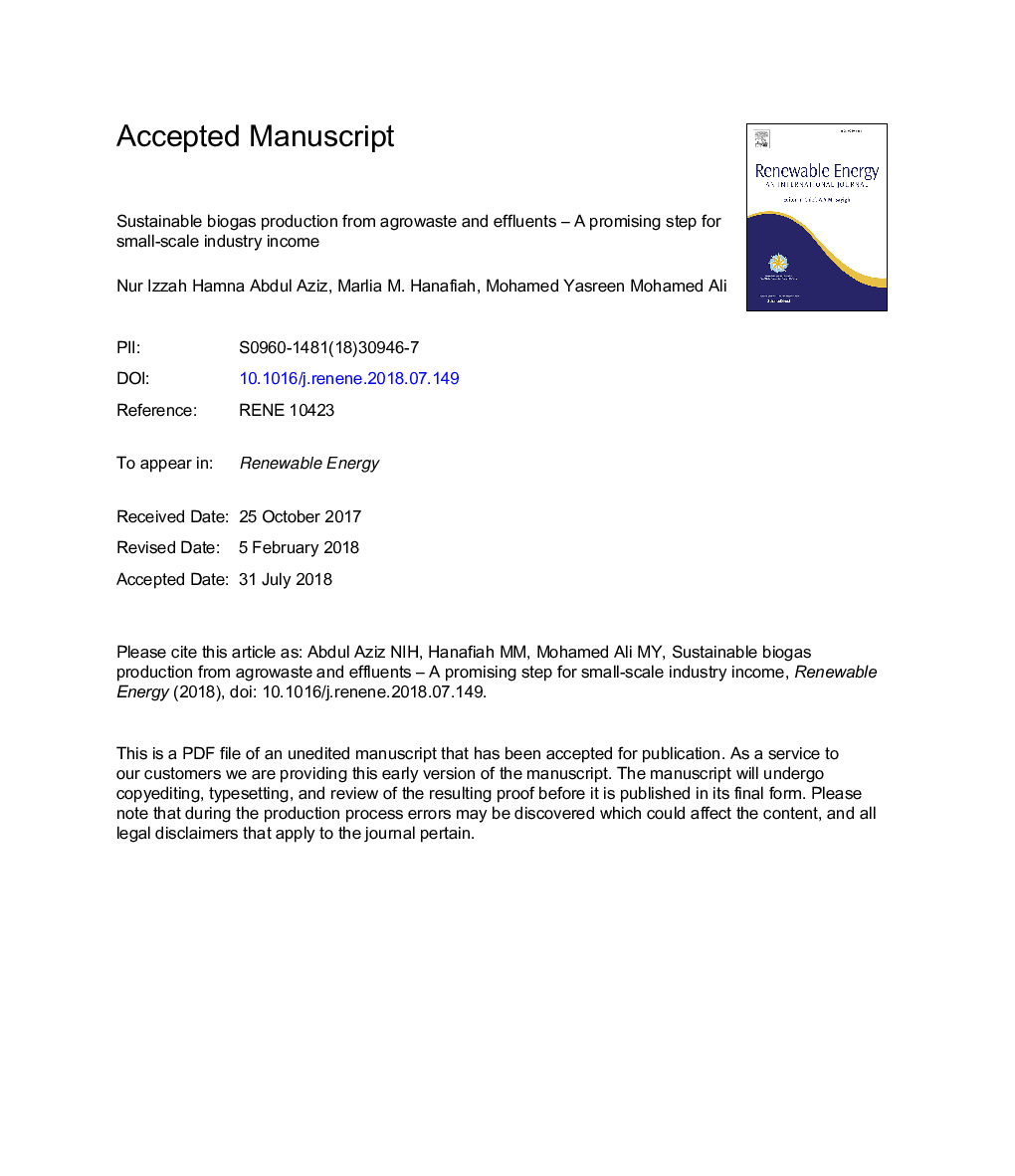| Article ID | Journal | Published Year | Pages | File Type |
|---|---|---|---|---|
| 6763577 | Renewable Energy | 2019 | 27 Pages |
Abstract
Waste-derived biogas is a promising technology that yields a renewable, sustainable, and green source of energy. This study was conducted to determine the potential of biogas production from six types of substrates (i.e., goat dung, chicken dung, fish waste, rice waste, palm oil mill effluent, and sewage sludge). The production of biogas from these substrates was compared using industrial inoculum and traditional bokashi as catalysts. The physicochemical characteristics were assessed using laboratory based analyses, whereas the Bio-Methane Potential (BMP) assay was used to measure the biogas production under mesophilic conditions for 20 consecutive days. The results revealed that all substrates using industrial inoculum have the potential to produce biogas based on the organic compound content. No methane gas was produced from the substrates using traditional bokashi. In conclusion, using industrial inoculum as a catalyst, all substrates could produce energy for a small-scale industry.
Related Topics
Physical Sciences and Engineering
Energy
Renewable Energy, Sustainability and the Environment
Authors
Nur Izzah Hamna Abdul Aziz, Marlia M. Hanafiah, Mohamed Yasreen Mohamed Ali,
